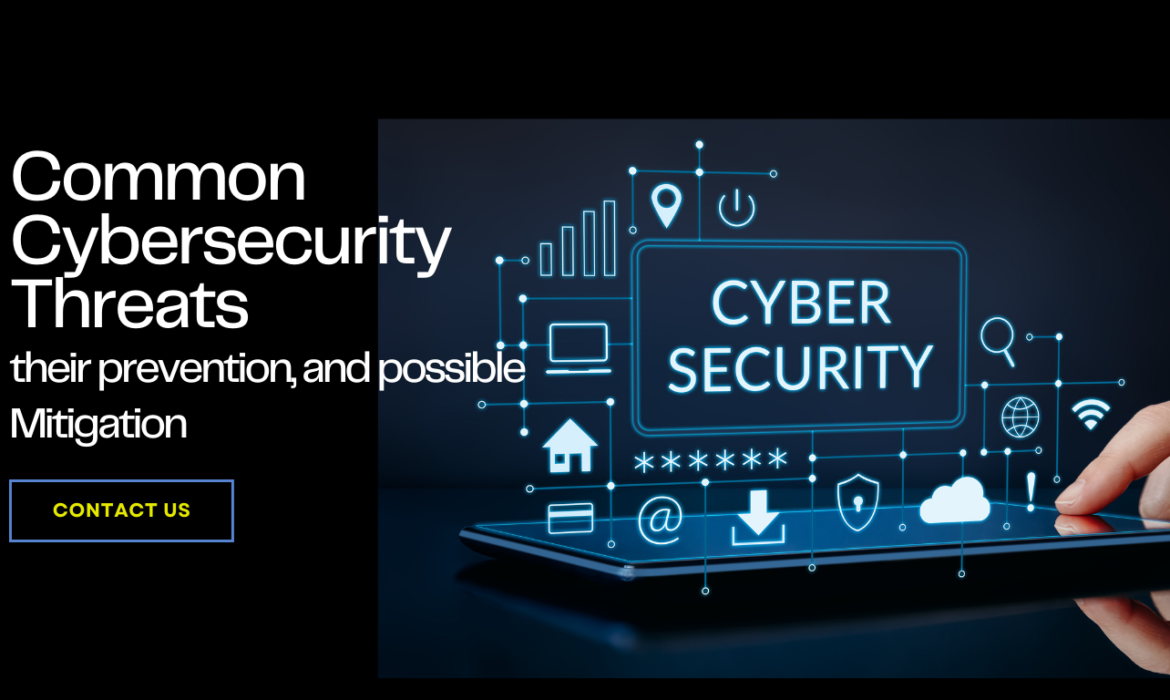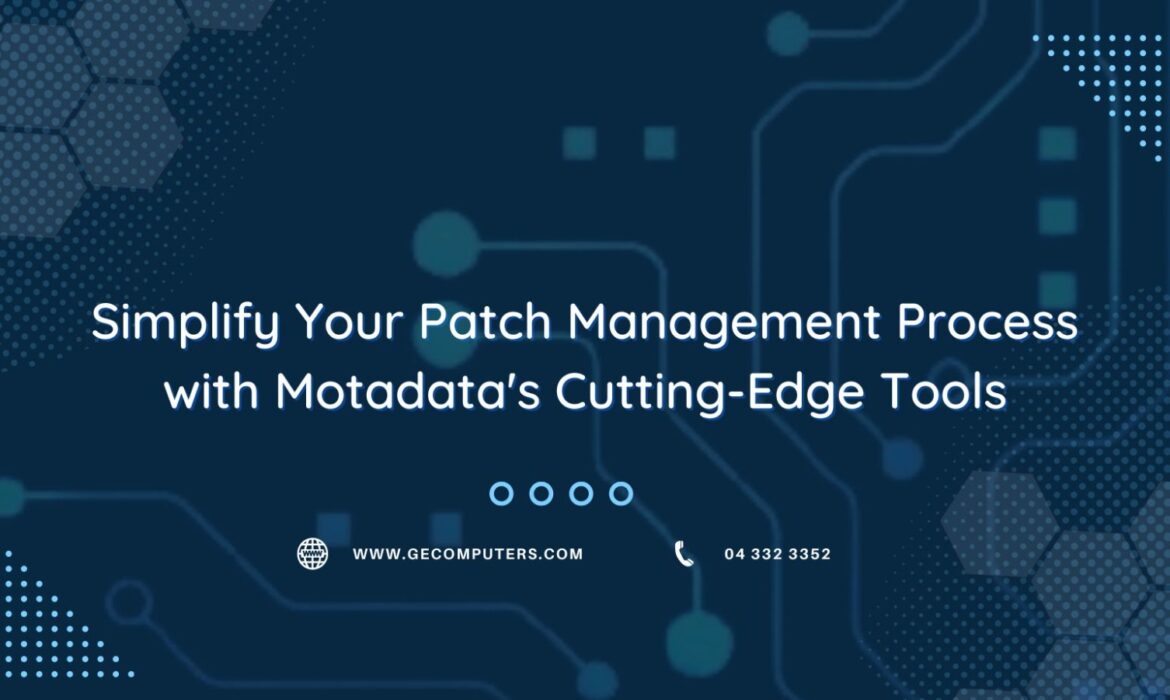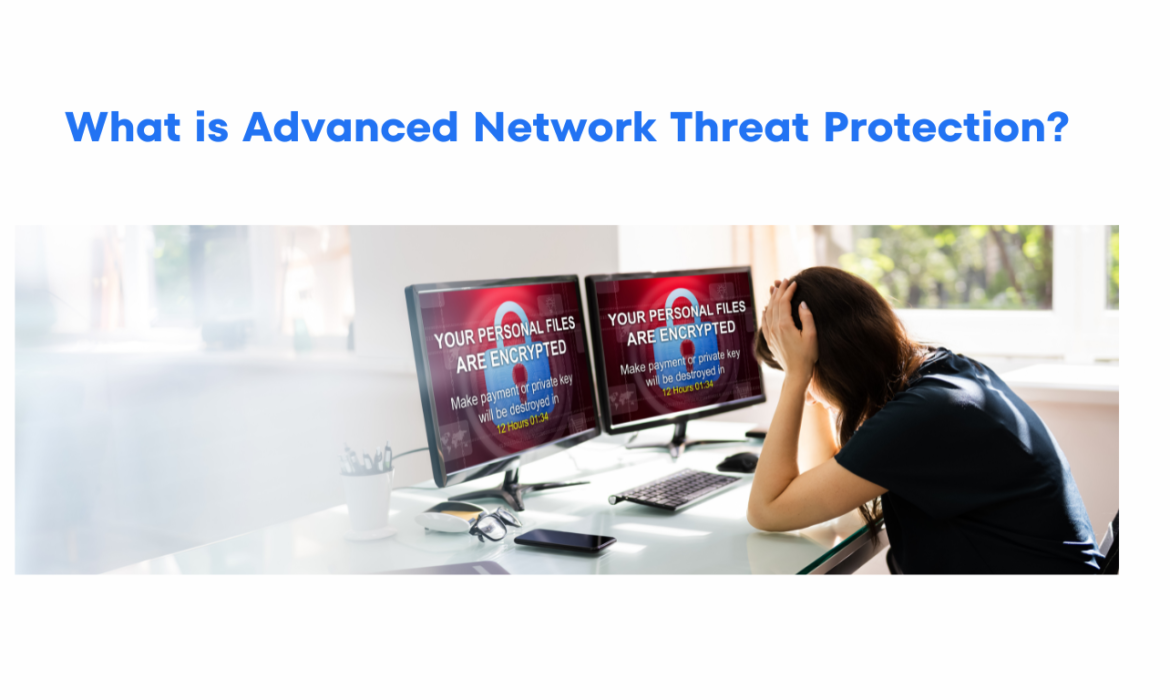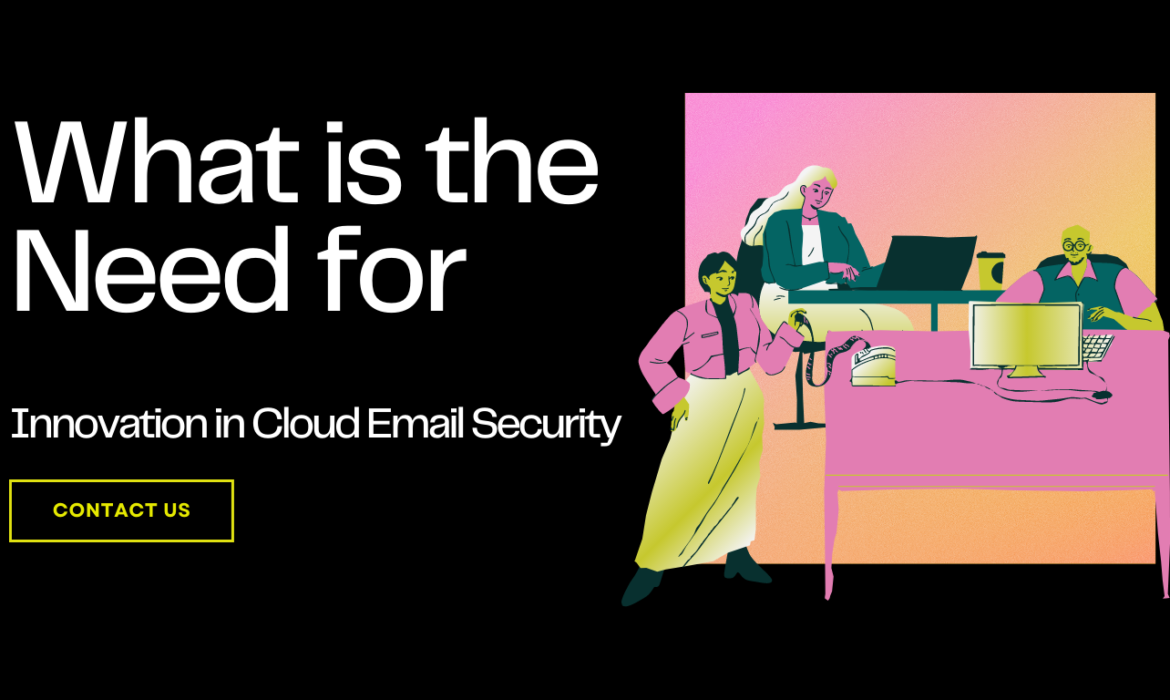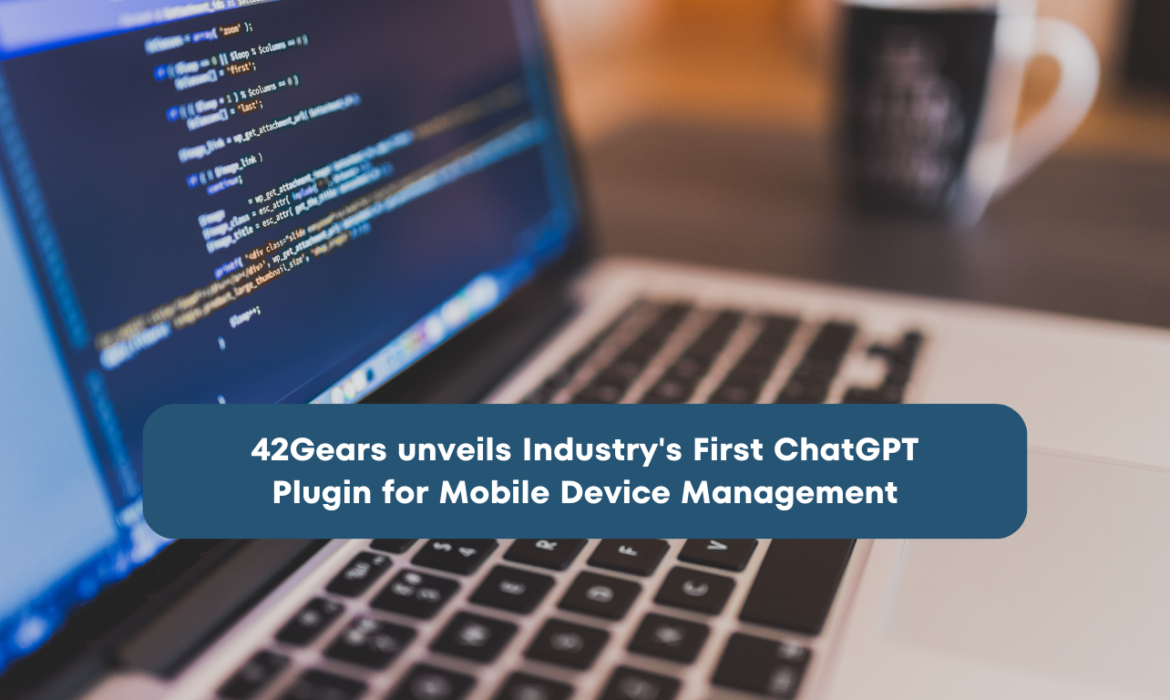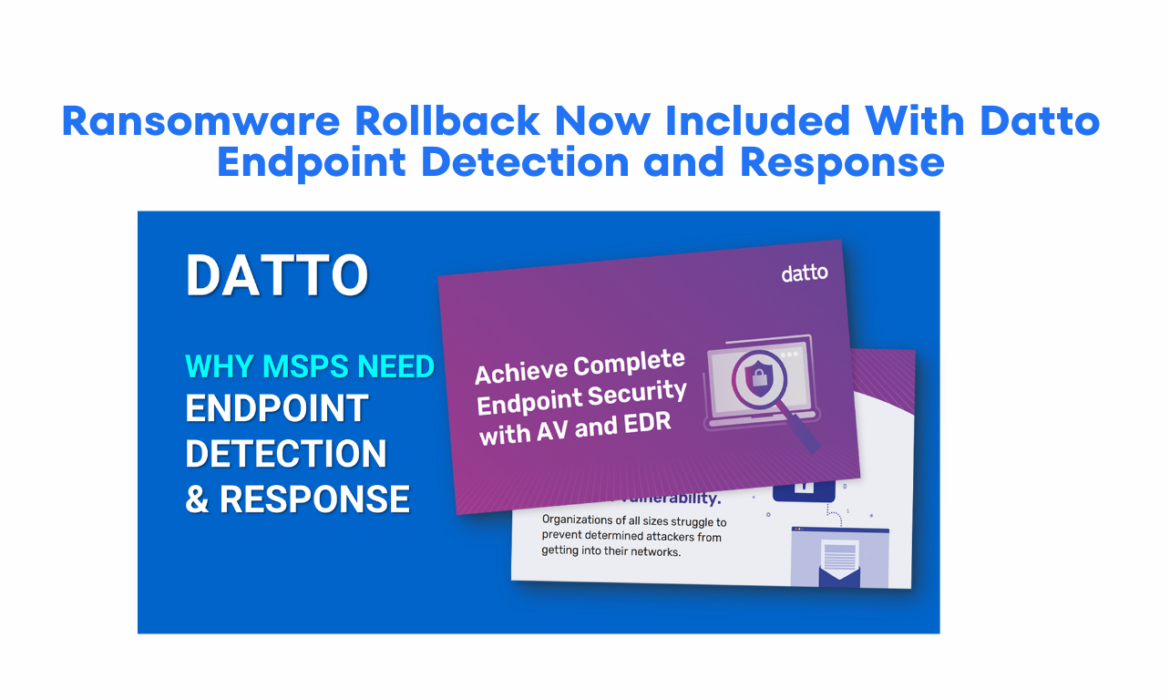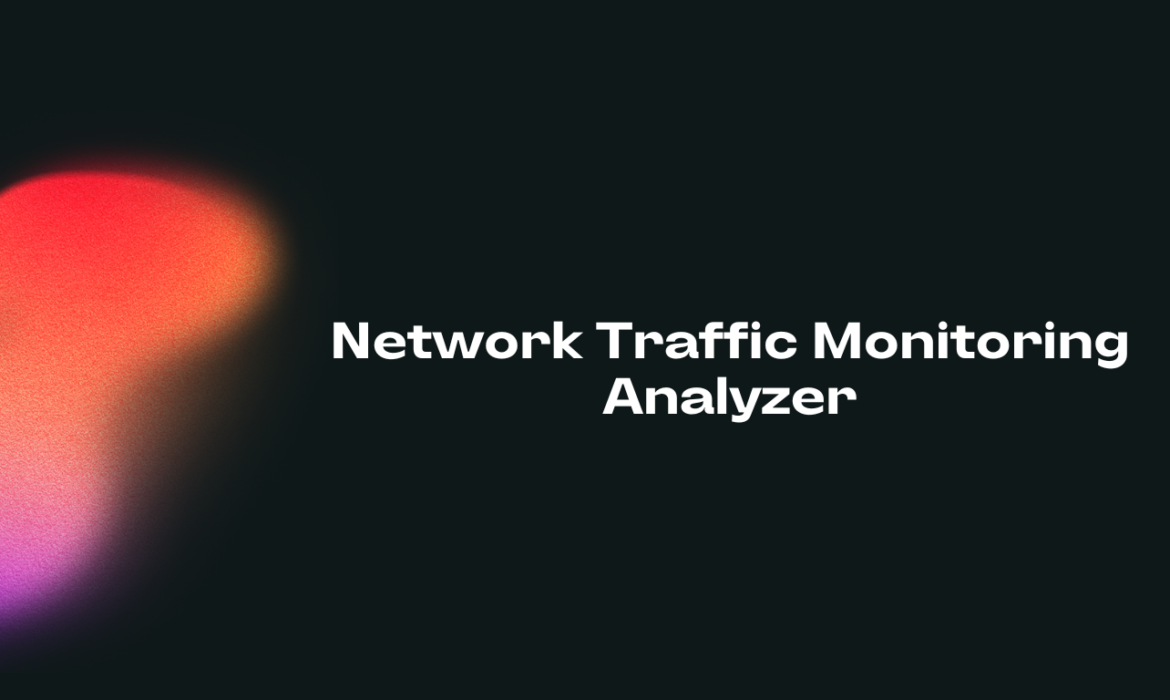Common Cybersecurity Threats, their prevention, and possible Mitigation
Top cybersecurity threats : Cybersecurity remains at the forefront of technological discussions, as information stands as the cornerstone of the ongoing technological revolution. Possession of information empowers one to rule over others, but malevolent actors seek to exploit this power for their gain. Despite the existence of numerous laws to prosecute these wrongdoers, the age-old adage “Prevention is better than cure” underscores the importance of averting potential threats facilitated by system vulnerabilities.
Distinguishing between a cyber-attack and a cybersecurity threat is imperative.
A cyber-attack involves offensive maneuvers targeting computer systems, networks, infrastructures, or personal devices. On the other hand, a cybersecurity threat entails potential negative actions arising from vulnerabilities, leading to undesirable impacts on computer systems or applications.
Daily life is fraught with countless cybersecurity threats. A study by the Clark School at the University of Maryland estimates a staggering number of attacks, highlighting the urgency of the issue. These attacks use weaknesses in systems and are commonly referred to as threats. This article provides an introduction to the realm of cybersecurity threats, going into their prevention and comfort.
Different types of cybersecurity threats:
- Malware: Intrusive software designed to harm systems.
- Phishing: Attempting to acquire sensitive data through fraudulent solicitations.
- Password Attacks: Malicious authentication into password-protected accounts.
- DDoS: Malicious cyber-attacks rendering online services inaccessible.
- Man in the Middle: Intercepting and altering data between communicators.
- Drive-by Downloads: Unintentionally downloading malicious code.
- Malvertising: Injecting malicious code into legitimate online ads.
- Rogue Software: Deceptive software that misleads users and installs malware.
Malware: Malware is an online attack that affects your system. It may be in the form of files that are entering into your system. Defined by malicious intent, the malware steals data or wreaks havoc on the host system. It intrudes for various purposes, from financial theft to corporate espionage. Infected files via email attachments, websites, and OS vulnerabilities are common vectors.
Prevention:
- Use secure authentication methods.
- Limit administrative account usage.
- Regularly update software.
- Adhere to the principle of least privilege.
- Implement email security and spam protection.
Mitigation:
Mitigating malware involves immediate action, as advised by ncsc.gov.uk:
- Disconnect infected devices from all network connections.
- In severe cases, consider disconnecting from the internet.
- Reset credentials and passwords.
- Wipe infected devices and reinstall the OS.
- Verify malware-free backups before restoration.
- Install, update, and run antivirus software.
- Monitor network traffic and conduct antivirus scans.
Phishing:
Phishing entails sending malicious communications to trick recipients into scams. Spear Phishing targets specific individuals, while Whaling targets high-profile individuals. Smishing and Vishing involve SMS and phone calls, respectively.
Prevention:
- Conduct regular security awareness training.
- Run internal phishing campaigns and simulations.
- Utilize anti-phishing software.
- Follow safe Internet practices and exercise caution.
Password Attacks: Password attacks involve malicious methods to breach password-protected accounts. Brute force, dictionary attacks, and key loggers are common techniques.
Prevention:
- Update passwords according to policies.
- Use complex passwords and security questions.
- Employ multi-factor authentication.
DDoS: Distributed Denial of Service DDoS attacks overwhelm servers with traffic, rendering online services inaccessible.
Prevention:
- Stay updated with software and security monitoring.
- Monitor data flow and physical connections.
Man in the Middle: Attackers intercept and alter data between communicators, often leading victims to believe they have a private connection.
Methods:
- Attack encryption protocols.
- Spoof HTTPS and SSL connections.
- Hijack SSL sessions.
- Intercept communication protocol layers.
- Spoof IP and ARP addresses.
- Deploy Automatic Proxy Discovery and DNS Spoofing.
- Misdirect using BGP manipulation.
Prevention:
- Use VPNs and secure connections.
- Implement endpoint security.
- Enable multi-factor authentication.
Drive-By Downloads: Malicious code is unintentionally downloaded, infecting systems through insecure apps, browsers, or OS.
Prevention (Website Owners):
- Keep website components up to date.
- Remove outdated components.
- Strengthen admin credentials.
- Install protective web security software.
- Consider ad content’s impact.
Prevention (Endpoint Users):
- Limit admin account usage.
- Keep software up to date.
- Avoid unnecessary programs.
- Use internet security software.
- Exercise caution on websites.
Malvertising: Malvertising embeds malicious code in online ads, often targeting users through reliable advertising networks.
Prevention (End-users):
- Utilize antivirus software and ad blockers.
- Avoid Flash and Java.
- Keep browsers and plugins updated.
Prevention (Publishers):
- Vet ad networks and inquire about security.
- Scan ad creatives for malware.
- Limit ad frames to specific file types.
- Employ web application firewalls.
Rogue Software: Rogue security software deceives users into paying for fake malware removal, installing malware instead.
Prevention:
- Practice online suspicion.
- Familiarize yourself with phishing scams.
- Be cautious of suspicious links.
By understanding and countering these threats, individuals, and organizations can bolster their cybersecurity defenses and navigate the digital landscape safely.
Contact us at Green Edge Computers to safeguard your business from Common Cybersecurity Threats. We provide your business with the best cyber security services and help you to keep your business safe from all online cyber threats.
Will Passkeys Be the Future, and Can We Forget Passwords?
In today’s digital world, passwords have become an integral part of our online security. We use them to protect our sensitive information, from emails and social media accounts to online banking and shopping. However, the rise of cyber threats and the limitations of traditional password systems have led to the exploration of alternative authentication methods, such as passkeys. In this blog, we will delve into the concept of passkeys, explore their potential as a future authentication method, and discuss whether we can bid farewell to traditional passwords.
Problem with Passwords
Passwords have served as a reliable means of authentication for decades, but they are far from perfect. Several issues arise with conventional passwords:
- Weak Passwords: Users often resort to weak passwords that are easy to remember, making them susceptible to brute-force attacks.
- Password Reuse: Many individuals reuse the same passwords across multiple platforms, which puts their accounts at risk if one gets compromised.
- Phishing Attacks: Cybercriminals frequently use phishing techniques to trick users into revealing their passwords unknowingly.
- Forgotten Passwords: Users often struggle with remembering complex passwords, leading to frequent password resets.
- Account Recovery: The process of account recovery through security questions or secondary emails is often flawed and insecure.
Introducing Passkeys
Passkeys represent a potential solution to the shortcomings of traditional passwords. Unlike passwords, passkeys are based on public-key cryptography. Instead of relying on a shared secret (the password), passkeys utilize a pair of cryptographic keys: a public key, which is known to others, and a private key, which is kept secret by the user.
How Passkeys Work
- Registration: During registration, users generate a unique pair of cryptographic keys. The public key is stored on the server, while the private key remains on the user’s device.
- Authentication: When a user attempts to log in, the server sends a challenge to the user’s device. The user’s device then signs the challenge using the private key, and the server verifies it with the corresponding public key.
- No Shared Secrets: Passkeys eliminate the need for users to share their private key or a password with the server, making it significantly more secure.
Advantages of Passkeys
- Enhanced Security: Passkeys provide a higher level of security as they are resistant to many common cyber-attacks, including phishing and brute-force attacks.
- No Password Fatigue: Users don’t have to remember passwords, which reduces the chances of weak passwords or password reuse.
- User-Friendly: The process of authentication with passkeys can be seamless and user-friendly, especially with hardware tokens or biometric integration.
- Reduced Account Recovery Hassles: As passkeys eliminate password-based logins, the burden of account recovery is diminished.
The Roadblocks to Passkey Adoption
While passkeys show great promise, there are challenges that need to be addressed before they can replace passwords entirely:
- Implementation Complexity: Adopting passkeys requires a significant overhaul of existing authentication systems, which can be time-consuming and costly.
- User Acceptance: Convincing users to switch from passwords to a new authentication method might require education and assurance of its benefits.
- Compatibility: Ensuring compatibility across various devices and platforms is essential for a smooth transition to passkey-based authentication.
Conclusion
Passkeys offer an intriguing glimpse into the future of authentication. With their ability to address many of the weaknesses of passwords, passkeys hold great potential to become the next standard in online security. However, widespread adoption will require overcoming implementation challenges and gaining user acceptance. Whether we can completely forget passwords remains to be seen, but it is clear that passkeys offer a promising pathway to a more secure and user-friendly digital world. As technology continues to evolve, the transition to passkeys could mark a significant step forward in safeguarding our digital identities. Contact us at Green Edge Computers to know more.
Simplify Your Patch Management Process with Motadata’s Cutting-Edge Tools
Patch Management Process : In today’s digital world, where cyber threats are constantly evolving, patch management has become an indispensable aspect of IT infrastructure maintenance. Organizations need efficient and reliable tools to ensure their systems and software are up-to-date and protected against vulnerabilities. In this blog, we’ll explore how Motadata’s Patch Management Tools can revolutionize the way you handle patches, streamline processes, and fortify your cybersecurity defenses.
Importance of Patch Management
Before diving into Motadata’s offerings, let’s understand the significance of patch management. Patching is the process of applying updates, fixes, and improvements to software and operating systems. By regularly patching your systems, you:
- Enhance Security: Patches fix vulnerabilities that hackers can exploit, reducing the risk of data breaches and cyber-attacks.
- Improve Stability: Software updates often include bug fixes and performance enhancements, resulting in smoother operations and fewer crashes.
- Meet Compliance Requirements: Many industry regulations mandate timely patching to protect sensitive information and ensure data integrity.
Introducing Motadata’s Patch Management Tools
Motadata offers a suite of powerful patch management tools designed to meet the diverse needs of modern businesses. Let’s explore some key features that make Motadata stand out:
- Centralized Patch Management: With Motadata, you can manage patches across your entire IT environment from a single, easy-to-use console. Say goodbye to manual updates on each system!
- Automated Patch Deployment: Save time and reduce human errors with automated patch deployment. Schedule updates during non-business hours to minimize disruptions.
- Comprehensive Reporting: Stay informed about patching status, compliance levels, and potential risks with detailed reports and real-time dashboards.
- Customizable Policies: Tailor patching policies according to your organization’s specific requirements. Motadata allows you to prioritize critical patches and set up approval workflows.
- Third-Party Software Support: Motadata’s tools extend beyond OS patching, supporting updates for a wide range of third-party applications to maintain comprehensive security.
How Motadata Simplifies Patching Workflows?
Motadata’s Patch Management Tools offer a seamless and efficient workflow:
Step 1: Patch Discovery
Identify missing patches and vulnerabilities in your infrastructure.
Step 2: Patch Prioritization
Prioritize patches based on severity and potential impact.
Step 3: Automated Deployment
Schedule automated deployment of approved patches during maintenance windows.
Step 4: Reporting and Compliance
Generate comprehensive reports for audits and compliance checks.
Step 5: Patch Verification
- Verify successful patch installations to ensure optimal system security.
Motadata vs. Traditional Patch Management
Let’s compare Motadata’s Patch Management Tools with traditional methods:
- Time Savings: Manual patching is time-consuming, whereas Motadata’s automation significantly reduces the time and effort required.
- Reduced Errors: Automated deployment eliminates human errors that are common in manual patching.
- Enhanced Security: With centralized management and third-party support, Motadata ensures comprehensive security across your infrastructure.
- Streamlined Compliance: Detailed reports simplify compliance audits and reduce compliance-related stress.
Conclusion
In conclusion, patch management is a critical aspect of maintaining a secure and efficient IT environment. Motadata’s Patch Management Tools provide a powerful solution to simplify and streamline the patching process, ensuring your systems are up-to-date, secure, and compliant.
Protect your organization from potential threats and improve overall productivity with Motadata’s cutting-edge patch management tools. Embrace the future of patch management and fortify your cybersecurity defenses today!
All you need to know about Mimecast Email Security
Mimecast Email Security : In today’s interconnected world, email remains one of the primary communication channels for businesses. However, this vital means of communication also presents significant cybersecurity risks. Cybercriminals constantly devise new and sophisticated ways to launch email-based attacks. To safeguard your organization’s sensitive data and maintain a robust cybersecurity posture, implementing a reliable email security solution is paramount. In this blog, we will delve into the world of Email Security and explore how it can help fortify your organization’s email defenses.
Understanding Mimecast Email Security
Mimecast Email Security is a comprehensive cloud-based solution designed to protect organizations from a wide range of email-borne threats. This powerful platform combines advanced threat protection, data loss prevention (DLP), and continuity features to ensure your business is safeguarded against email-based cyber threats effectively.
Key Features and Benefits
a. Advanced Threat Protection:
Mimecast employs sophisticated algorithms and threat intelligence to detect and block known and emerging threats, including malware, ransomware, phishing attacks, and malicious URLs. By leveraging multiple detection engines, Mimecast provides a multi-layered defense to keep your organization safe.
b. Secure Email Gateway:
Mimecast acts as a secure gateway for incoming and outgoing emails, analyzing every message for potential threats. Its real-time scanning and sandboxing capabilities help identify and neutralize threats before they can reach the end-users’ inboxes.
c. Data Loss Prevention (DLP):
With its DLP capabilities, Mimecast prevents sensitive data leaks and ensures compliance with industry regulations. The system can automatically detect and block outbound emails containing confidential information, such as credit card numbers or personal identification.
d. Email Continuity:
Downtime can be disastrous for any business. Mimecast provides email continuity services, ensuring uninterrupted access to emails even during planned or unplanned outages. This feature enables employees to continue their work seamlessly without disruptions.
Seamless Integration with Existing Systems
Mimecast Email Security is designed to integrate seamlessly with popular email platforms like Microsoft Office 365 and Exchange, as well as other email services. This ease of integration allows organizations to enhance their existing cybersecurity infrastructure without causing disruption to their current workflows.
User-Friendly Interface and Administration
Mimecast’s user interface is intuitive and easy to navigate. Administrators have access to a centralized dashboard, allowing them to monitor email security, manage policies, and respond to threats promptly. Additionally, the platform provides detailed reporting and analytics to gain insights into email security trends and patterns.
Industry Recognitions
Mimecast Email Security has received recognition from leading cybersecurity analysts and research firms for its effectiveness in protecting against email threats. Its consistent performance and innovation have positioned Mimecast as a market leader in the email security domain.
Conclusion
In conclusion, ensuring the security of your organization’s email communications is no longer optional but a critical necessity. Mimecast Email Security offers a robust and comprehensive solution to combat the ever-evolving email-based threats that businesses face today. With its advanced threat protection, data loss prevention, and email continuity features, Mimecast equips your organization with the necessary tools to safeguard sensitive data, maintain business continuity, and foster a cyber-resilient environment.
Implementing Mimecast Email Security can significantly reduce the risk of falling victim to email-based cyberattacks, providing peace of mind to both management and employees alike. Embrace the power of Mimecast to enhance your organization’s email security and stay ahead in the relentless battle against cyber threats. Contact us at GreenEdge Computers for the best Email Security Services.
What is Advanced Network Threat Protection?
Advanced network threat protection (ATP) is a specially designed network protection software that helps you to protect your business from advanced threats and attacks. It also provides you the many benefits. In this article, we will be going to discuss all important and interesting things related to Advanced network protection. Also, sharing with you some network protection devices that help you to protect your business network and data easily. To get the full information keep reading this article.
Why do you need advanced network threat protection?
If you want to secure your business network hassle-free then we suggest you use advanced network threat protection. Green Edge Computers suggest you this solution because protecting your business data is our first and only responsibility.
Advanced network security provides you with the best-advanced malware and virus-detecting feature. It also continuously scans your system and when it finds any virus or suspicious thing it alerts you before the virus alerts you. This solution also provides you the many no. of advantages.
Benefits of Advanced Network Threat Protection
Here, we are going to share with you the benefits of using advanced network threat protection.
Advanced Malware Detection: Network threat protection provides you with an advanced virus detection feature. With the help of this feature, you can detect viruses and threats easily. It helps you to scan your system and when it finds something suspicious it alerts you immediately. Green Edge computers provide you with the best network security software with advanced solutions. For more information, you can contact us at +971 4 3323352.
Lower False Positives: ATP helps you to improve the accuracy of your alerts, which exactly means your protection teams can concentrate on a smaller set of actual intrusions.
Protection against zero-day malware and vulnerabilities: It also provides you protection against zero-day malware and threats.
Providing threat analysis: Providing threat analysis to effectively prioritize risks and organize the response. It helps you to analyze viruses in your system.
Here, we shared with you the top four benefits of threat protection. By utilizing the best network security software that delivers the best ATP solutions, your company can maintain a hardened and compliant protection posture by monitoring & managing all aspects of your protection systems. We completely take of your network security. We provide you the 24×7 network security services.
How does Advanced Threat Prevention work?
Fundamentally, Advanced Threat Prevention solutions perform sophisticated detection and analysis of suspicious network traffic, often employing hardware emulation and supervised and unsupervised machine learning models. ATP solutions attempt to identify threats early – before they can do damage – and respond quickly in the event of a breach. The goal is to protect the network with the highest possible fidelity insights into the most challenging threats.
Why choose us for Network Security?
Our team of expert network security helps you to provide the best network protection services. As we say in the above article protecting your data is our first and only responsibility. We provide you the 24×7 customer support. If you see any problem during protecting your data you can directly contact us. We are always ready for your help. For more information, you can contact us at any time.
Thanks for reading this article!
Need for Innovation in Cloud Email Security
Cloud Email Security : When it comes to managing security tools, IT security admins can find that their recently executed email security solutions or inherited legacy solutions are not as innovative or useful as they expected. The reason? They can present unexpected complexity, need more hands-on management, or worse, the customer may feel as though the solution’s capabilities were inflated at the time of purchase, or in the case of inherited legacy solutions, do not perform as effectively as needed. In both cases, associations are faced with a tough choice: keep their existing solution and hope for the most useful, which can be much more comfortable, or seek out and execute a new solution that can deliver more innovative and effective components.
While it’s more useful for overall email and union security in the long term, the harder road often stays in the short term. IT and security organizations can simultaneously be impacted by increased costs while maintaining two solutions at once and a tough transition that requires many of their critical resources.
While there can be a laundry list of development deficiencies to consider when considering enforced security solutions, here are key red flags to watch for:
IT teams are spending more time managing technology than working
Cloud Email Security : There was a rush to implement the current solution, but now, there are security gaps and no time to fix performance issues. For instance, IT admins shouldn’t discover after a period of use that their solution is weak in crucial areas such as phishing security or business email center.
Product updates are disruptive and sometimes slow, resulting in vulnerability to risk and attack. Cybersecurity must enhance business operations, not hinder it.
On-premises deployments that were touted to be safer by vendors have created more risk.
The vendor covered up poor capabilities, especially limitations in the email security solution’s ability to scale. For example, if the email security product they purchased does not integrate as easily as promised with other tools, it can impede the security team’s scalability and innovation.
Vendors touted continual innovation during the sales process, but their actual innovation is limited or focused on their biggest customers. Worse yet, some vendors don’t even focus on email or are in the process of leaving the email security market. Companies should strive for agents that are experts in best practice performance and have proven effectiveness in lowering risk and time spent managing email. Their solution should block all email-based threats with AI-powered, industry-leading detection that is trusted by thousands of clients. Their platform should always be on and be 100% cloud-based with no updates, patches, or management crises. IT and security teams should also seek out a vendor that is continuing to invest in email security.
IT and security admins should never feel as if their solution’s original implementation was managed poorly. They should never spend more time managing technology than doing their actual job.
Cloud Email Security : Mimecast understands the challenges organizations can face when needing to transition to a new cybersecurity solution that is more innovative and is stepping in to help organizations overcome those challenges. Email security is just so critical that we are willing to lend a hand when it comes to transition expenses. Organizations that are ready to take advantage of Mimecast’s Bridge Program should reach out today. Contact us at Green Edge Computers to know more.
42Gears unveils Industry’s First ChatGPT Plugin for Mobile Device Management
We are delighted to unveil the latest creation from 42Gears—the SureMDM ChatGPT plugin. This easy yet sophisticated plugin lets you secure, monitor, and control your fleet of mobile devices straight from within ChatGPT using everyday conversations.
Almost all businesses embrace digital transformation and mobile technologies, and managing and ensuring mobile devices has become increasingly complex. We, at 42Gears, understand the challenges encountered by IT administrators in this ever-evolving environment and deliver practical solutions to address them. SureMDM, our flagship mobile device management (MDM) solution, has long been trusted by organizations worldwide for its powerful features and comfort of use. Now we are going to talk about its simplicity up a notch with ChatGPT integration.
Let’s delve into how this integration certifies system administrators:
Enjoy a jargon-free, conversational interface
With the help of the SureMDM-ChatGPT Plugin, every day you can use, natural language to deploy auto-configured devices, update security policies, perform troubleshooting, ask questions related to device health, and more. ChatGPT, with its powerful Natural Language Processing capabilities, processes your questions, interprets the context, and produces appropriate answers/suggestions.
Monitor your devices with ease
Interact with the SureMDM ChatGPT Plugin to prevent device status, observe battery levels, and review network connectivity and channel location information–all without leaving your ChatGPT interface.
Apply policies and configurations in a jiffy
While IT admins can automate components of applying company-defined policies and agreements to company-owned and BYOD devices, they still do numerous manual work. With the SureMDM ChatGPT plugin, applying policies, configuring device settings, enforcing regulations, deploying applications, and revising firmware can be done easily and fast.
Secure devices through simple conversations
Assure the safety and innocence of your corporate devices and data with intuitive security management right from ChatGPT. Just chat with SureMDM ChatGPT and give commands to lock devices, implement password policies, wipe data, and more. Effortlessly rescue your devices from unauthorized access and potential security threats.
Get valuable device insights at your fingertips
Make informed IT decisions and increase the possibility of your gadgets using the actionable insights from the SureMDM ChatGPT Plugin. Engage in everyday analysis to obtain reports, analytics, and suggestions on device usage, application performance, compliance adherence, and more.
Extend the functionality
Tailor the SureMDM ChatGPT plugin to satisfy your organization’s specific requirements. ChatGPT’s adjustable architecture allows you to integrate with existing workflows, automate essential tasks, and improve functionality. Leverage numerous plugins to further automate routine tasks, such as creating a support ticket for devices that need intervention.
Interested in trying out this amazing technology?
You can get the ChatGPT Plugin available for select SureMDM Enterprise customers.
Ransomware Rollback Now Included With Datto Endpoint Detection and Response
Datto Endpoint Detection : When ransomware attacks, files become encrypted. That’s the hallmark signature of most ransomware attacks. Even if you pay the ransom, there’s no assurance that you’ll get the keys to unlock your encrypted files. Bottom line, when ransomware hits you are likely to misplace important data.
It ends with Ransomware Rollback. Ransomware Rollback is a unique, innovative attribute contained with Datto Endpoint Detection and Response (EDR) that offers you peace of mind knowing that when a ransomware attack hits you’ll be able to get your files back, intact as they were before the incident.
Datto EDR includes Ransomware Detection
Datto EDR contains Ransomware Datto Endpoint Detection, a remarkable and effective anti malware technology that recognizes known and unknown types of ransomware and destroys the encryption method once an attack starts. As quick as Ransomware Detection is, the attacker’s encryption method always strikes first, meaning some files become encrypted before Ransomware Detection can kill the procedure and isolate the endpoint.
To handle this, Datto created Ransomware Rollback, a lightweight application that follows changes on endpoint disk space, delivering rollback functionality for files and databases affected by ransomware attacks. It consists of software that operates silently in the background, as well as a desktop application utilized for monitoring and controlling the rollback operation.
The solution works by blocking file system calls made by applications and then executes tracking of the changes caused. For example, if a file is renamed, deleted, or updated, the system records these modifications and stores them in a specified tracking directory on the user’s disk.
For database applications like SQL Server or QuickBooks, Ransomware Rollback protects the data being written on an operation-by-operation basis, allowing the whole update to be rolled back if it is compromised by ransomware.
What does it offer?
Unlike other EDR applications that offer comparable rollback abilities, Datto EDR with Ransomware Rollback does not depend on Windows shadow copy, which is often targeted by ransomware attacks. This assures that your files and data are safe from even the most progressive cyberattack.
Ransomware Rollback management console
What’s more, Ransomware Rollback translates the problem of “wiper” attacks. Data wipers are one of the fastest-growing types of malware. Here, the purpose of a wiper attack is to delete and eradicate files and data.
Ransomware Rollback even fixes deleted files, such as those hit by a wiper attack or files deleted by calamity. Through the creation of hard links in a tracking manual, Ransomware Rollback confirms that users can restore deleted files, no matter the possibility.
Conclusion:
Ransomware Rollback is an integral part of Ransomware Detection, which is included with Datto EDR. With one click, you can fast revert encrypted data and files to their earlier state, which causes the recovery procedure easy, efficient, and effortless. Contact us at Green Edge Computers to get a demo of Datto EDR with Ransomware Rollback.
Network Traffic Monitoring: Why Network Admins Need Network Traffic Analyzer?
Network Traffic Monitoring Analyzer : Network Performance Management assists in Network traffic monitoring. It helps in reviewing, analyzing, and managing network traffic for any exception. A network traffic analyzer is a method that can impact network performance, availability, and/or security. Network traffic monitoring uses different tools and methods to study your computer network-based traffic.
When networks get busy it is very common that the overall speed of these networks decreases. A lot of other trends are getting famous in the IT infrastructure like a boost in the use of cloud servers, video, VOIP, etc. All these trends put enormous pressure on IT infrastructure aids. When the stress on any network grows, it is very common for businesses to monitor network traffic with the benefit of Network monitoring software.
The procedure is not only costly but it is also useful for a very concise period. When you deliver more IT infrastructure resources to the network but do not try to reduce the pressure, in the end, the infrastructure will again face identical problems which it was facing before the upgrade.
The best way to pinpoint the kind of network traffic and its source is the Netflow analyzers. In simple terms, Netflow is a feature that was first introduced in Cisco devices. It can collect IP-based network traffic by monitoring the influx and outflow of the data. Also, it allows the administrator to keep a check on the source and destination of the traffic, class of service, and reasons for congestion. It makes it more comfortable to understand the network traffic and handle it properly, as a quote from Peter Drucker (Management Guru) goes “What Gets Measured, Gets Managed”.
Recommended: Network Management System: How to Devise an Effective Strategy
Why Network Admin Needs Network Traffic Monitoring Analyzer
There are various defendable reasons to monitor overall traffic on the network. The information created by the network traffic monitoring tools could be used in multiple IT operational and security use cases. For example – To discover security vulnerabilities and also troubleshoot network-related issues and examine the effect of new applications on the overall network.
However, a critical note in this regard – not all the tools for monitoring network traffic are the same. Usually, they could be split into two broad types – Deep packet inspection tools and flow-based tools. Within these two types, you have the option of tools that do not require software agents or tools. Also, they should store historical data and tools with intrusion detection systems that monitor network traffic within the network as well as along the network edge.
#1. Internal network visibility
Network flow monitoring software that helps protocols such as Netflow, IPFix, JFlow, sFlow, etc. can provide full visibility of internal network traffic. With Motadata, the IT department can develop insightful reports about the following types and kinds of traffic
Traffic for Top Applications | Traffic for Top Conversations | Traffic Destinations with Host IP | Top Traffic Sources With IP address | Top Traffic Receivers with IP | IP to IP Traffic | Protocol-Traffic | Port Traffic | Application Traffic
#2. Identification of slow applications
Speed aka performance plays a vital role in user experience. One of the most submitted help desk tickets is about the application (web application, Go-to-Meeting, Skype, etc.) being slow or getting crashed. There can be several reasons out of which only one or two will be applicable at any particular time. Determining the reason is not only time-consuming but costly as well. The next-generation Netflow software can filter and report the exact cause. By connecting the internal data reports with external resources, the system administrator can know a lot about the system and the faulty network.
#3. Detection of spyware and other hacks
When these worms strike your network, they form a very unique data flow in and out. With the help of Netflow, these distinctive patterns are easy to catch. In case you are not using some data analyzer, these patterns often go unchecked because these are created to fool the human administrator.
Most of these worms often cause non-financial issues by creating a bad image for the company. However, in some cases, the impact of these worms can include high rates of financial loss as well.
#4. Detection of outflow of personal information of clients
This point is mainly applicable to the companies that deal in Payment Gateways or the Payment Card Industry. A good payment gateway never lets the personal data of the client get leaked out from its system. In a separate hack, such information may start flowing out which is instantly reported by the Netflow software.
#5. Departmental bandwidth usage
If you are tense about the overall usage of the network and are incapable of finding out which branch is using the data flow in a massive amount, Netflow can come in handy. It can hunt and point out IPs and devices which are using the network resources. The management can take proper action to decrease the pressure on the network then.
Conclusion
Netflow is a famous and widely supported protocol, Motadata platform endorses Netflow (versions: v5, v9), IPFix, sFlow, and JFlow. You should try the Motadata Network Traffic Analyzer tool today and see how it works. Try! Contact us Green Edge Computers to know more about Network Traffic Monitoring Analyzer.
Why You Need Complete Data Protection?
“How can I protect my client’s data?” It’s a key question for businesses — one that’s developed increasingly difficult to answer.
Years ago, when business-critical data was only housed in data centers, setting a secure perimeter was slightly complex. Today, however, an SMB’s important data lives everywhere: on-premise servers and virtual machines (VMs), public cloud-hosted workloads, SaaS-based applications like Microsoft 365, laptops in the home and office, and more.
How Can I More Easily Secure Data?
This data buildout has produced new challenges for MSPs. You now discover that you’re working in a greatly expanded business continuity and disaster recovery (BCDR) landscape.
As a result, MSPs have been in search of a holistic approach to protecting these far-flung data stores. Can you confirm that critical data can be retrieved from a ransomware attack on an infected laptop or server? How do you take prolonged cloud outages? What do you do when required files are deleted, by calamity or viciously?
Until now, an MSP’s only answer was to piece together many separate BCDR solutions to deliver complete protection for their clients. While this course enlarges the scope of data backup, restoration, and protection abilities, it also comes with significant tradeoffs.
These tradeoffs need to access numerous administrative interfaces. In addition, as the number of solutions mushrooms, MSP margins take a hit. It’s because your techs have to be taught about various products. Meanwhile, there’s the sheer logistical complexity that comes with having multiple agents, from both an active and administrative perspective.
The more fragmented the BCDR security becomes, the harder and more expensive it gets for MSPs to deliver on a core goal: to offer seamless, secure protection for your client’s data.
Complete Data Protection, Simplified
With so many hazards risking data today, MSPs need every edge they can get to minimize downtime and get customers up and running. Ransomware in individuals remains on the rise, with 85% of MSPs reporting attacks against SMBs in the last two years.
When you partner with a seller offering a cohesive solution, there’s a clear path toward easy-to-use data security. It simplifies their performance and management can work with improved trust in their data protection workflows.
Datto offers this cohesive solution, helping MSPs to rescue data no matter where it lives.
With Datto Unified Continuity, MSPs can span the full breadth of places and devices where business-critical data must be rescued. A best-in-class product suite, Datto Unified Continuity is backed by the unchangeable Datto Cloud as offsite backup storage.
Datto Unified Continuity incorporates the following solutions:
SIRIS — This excellent hardware solution delivers outstanding local virtualization boot time and commission, resilient backups, and dedicated BCDR for businesses of any size. Meanwhile, SIRIS Virtual and SIRIS Imaged deliver the SIRIS platform’s full quality set for companies that choose to use their hardware.
ALTO — Datto’s small business hardware offering delivers enterprise-grade business continuity and data protection at a cost that’s reasonable for small companies, complete with hybrid virtualization from the Datto Cloud.
Datto Continuity for Microsoft Azure — A complete, secure, and dedicated business continuity solution that protects clients’ workloads in Azure from negative attacks, vendor outages, and single-cloud risk.
Datto SaaS Protection — Datto SaaS Protection is a cloud-to-cloud backup solution, offering comprehensive backup and recovery for critical cloud data that lives in Microsoft 365 and Google Workspace applications.
Cloud Continuity for PCs — A dedicated, easy-to-use backup and recovery solution for PCs. A huge amount of critical company data still lives locally on employee laptops. Datto allows businesses to stop endpoint loss and streamline data recovery, by watching client computers against ransomware, loss or theft, system loss, and random deletion.
One Solution for Business Continuity
From laptops to on-premises servers to public clouds and centric workloads, the range of places where SMB data resides has grown. You can keep ahead of your customers with Datto Unified Continuity, the total solution that gives MSPs:
- One vendor
- One support organization
- One cloud administration portal with single pane management
- The immutable Datto Cloud for offsite backup storage
- A predictable cost model
- Total data protection
The prospect of ransomware attacks, accidental deletion, and disasters makes data protection unpredictable. MSPs can restore order with the streamlined control of Datto Unified Continuity, knowing that their client’s critical business data is safe — no matter where it lives.

